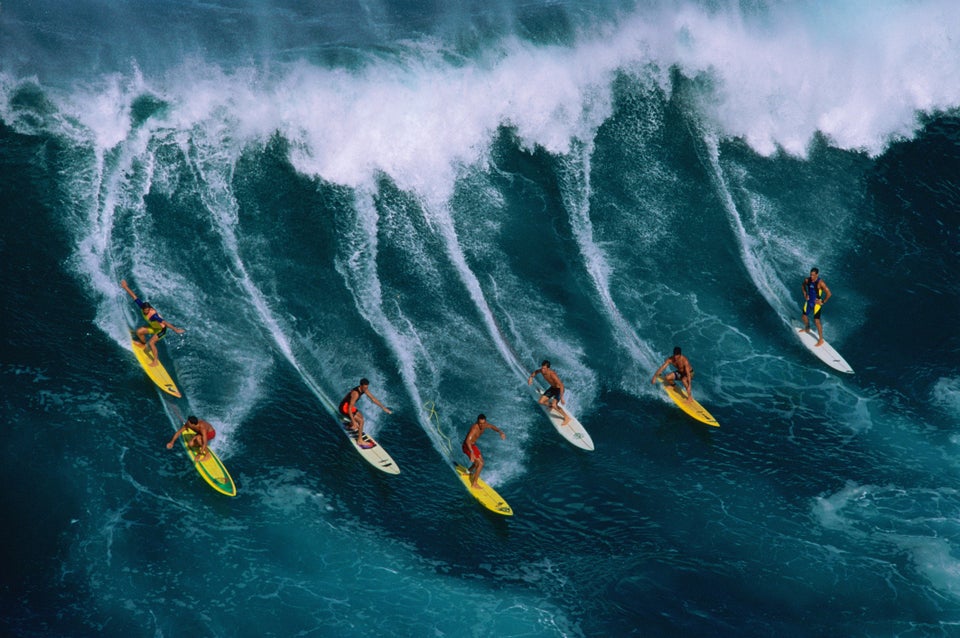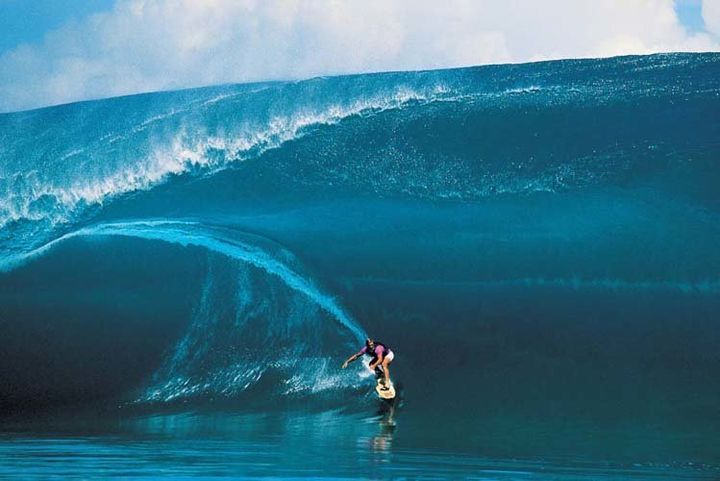
Laird Hamilton surfing Teahupoo in 2000.
In 2000, Laird Hamilton infamously surfed the most dangerous wave in the world. It was as tall as a seven-story building. He was 36 years old. Everybody flipped out.
It's just one example of how Hamilton has continued to disrupt the surfing world for over 30 years by constantly reinventing new ways to conquer the ocean.
He has saved lives at sea more than once. He's “shot the pier” by maneuvering his board in between the supporting pillars of the Malibu pier during a storm. He's popularized standup paddling and invented tow-in surfing, which has allowed athletes to ride enormous waves in the ocean that were previously deemed impossible. His invention of the foil board could be the future of big wave surfing.
Surfer Magazine nicknamed him the sport’s “test pilot” and The Washington Post called him the world’s greatest athlete.
Yet, despite all this, Hamilton has never actually competed professionally.
“I’m a terrible loser. I was so competitive, I wouldn’t compete. Show me somebody who can lose well, and I’ll show you somebody who loses," Hamilton told The Huffington Post last week.
“If you can accept loss, you won’t be winning a lot," he added.

HuffPost met with the supremely tanned 51-year-old in his kitchen in Malibu, California, on a sweltering August day. Wearing not much more than board shorts and boiling a pot of turmeric on his stove, Hamilton is the epitome of a West Coast surfer. He limped badly because of a hip injury but acted like nothing was wrong. A giant box of organic Hawaiian ginger sat near his stainless steel juicer as he offered fresh coconut water from a glass jar.
But it's not just his aversion to losing, Hamilton says, that keeps him away from competitions. The sport's' inability to be contained by numbers, ratings and scores is another piece of the puzzle.
“It’s very difficult to judge surfing because surfing is art,” he declared.
Hamilton’s connection to the water started at birth. He was born in 1964 in an underwater tank called a bathysphere, which was originally designed for deep-sea exploration.
His allegiance to surfing came soon after: he grew up in Hawaii and learned the sport from his stepfather, 1960s pro surfer Bill Hamilton. The younger Hamilton’s refusal to compete professionally stems partially from this relationship.
“I watched my stepfather, who was one of the best surfers of his time, get judged. I watched him have some weird calls in contests, whether they were fair or unfair, and I saw the devastation that it caused him,” Hamilton said.
Laird Hamilton rose to fame during a time when free surfing was just as popular as professional surfing. He made a name for himself as one of the most fearless surfers, taking on the biggest waves around the globe. Sponsorships helped bring in money and he was able to skip competitions altogether.
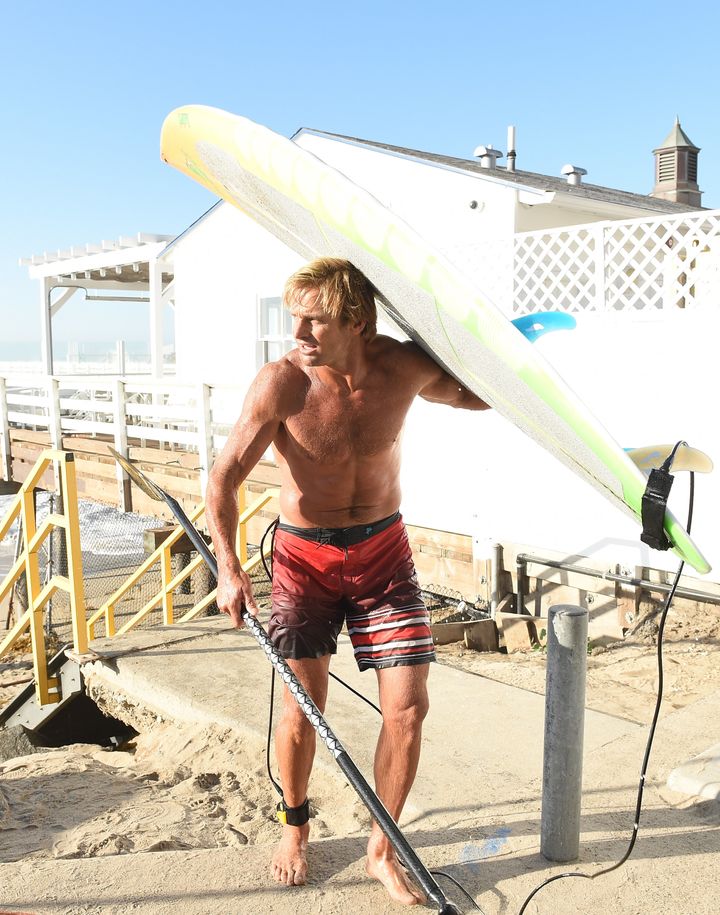
Hamilton in Malibu in 2014.
Instead of competing for judge’s marks and rankings, Hamilton preferred more serious stakes.
“My competition was you’re stuck in a rip current, you don’t make it, you drown. You just go to the death and that’s why I’m still here, because I survived it,” he said.
But the crux of why Hamilton refuses to officially compete in surfing comes down to something much more philosophical than judges' calls.
“A creative man is fulfilled by accomplishments and a competitive man is fulfilled by beating others," Hamilton said, paraphrasing an old saying. He continued, "I’m all about accomplishments. Ride the biggest wave. It has to do with me. I can always grow and keep accomplishing things.”
This insistence on competing only with himself is a survival mechanism of sorts -- or an almost spiritual life philosophy. “I wanted to be in control. I wanted to be the one determining if I felt fulfilled or not,” Hamilton said.
The fulfillment he gets from the ocean is obvious. He talks about the sport with a tone most people reserve for mentors or elders, noting that it has taught him humility.
"You have a feeling of purpose and clarity,” he said.
“I look at myself, and other than being a husband and a father, my purpose on the planet is being on giant waves. That gives me a chance for some sort of fulfillment and contentment. A chance …”
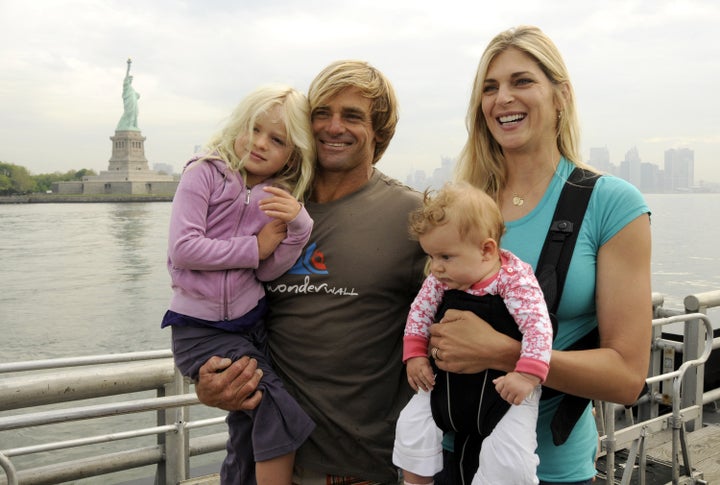
Hamilton, Gabrielle Reece and their two daughters in 2008.
Being a father has played a significant role in shaping and extending Hamilton's outlook.
He first met his wife, world champion beach volleyball player Gabrielle Reece, in 1995 and married her two years later. They have two girls together, ages 11 and 7, as well as Hamilton’s daughter from his first marriage, who attends UCLA.
And while all of his girls are great swimmers, he said none of them are pressured to surf. In fact, his two younger daughters play tennis and ride horses.
“I’m not pushing it. I’m not a little league dad. If they want to surf, they can surf. If they don’t, I’m totally good with that,” Hamilton said.
The surfer said he rather give his daughters freedom and courage that comes from making their own decisions. In the past, Hamilton has said that if he scares himself once a day, he’s a better person.
“I think one of my duties as their dad is to make them courageous," he said. "That doesn’t mean be foolhardy. The way you teach it -- and believe me, it’s the hardest thing to do -- is by giving them freedom. I give them the responsibility to do things on their own."
Hamilton himself was fearless as a kid and his intensity was his greatest strength. It is rumored that he jumped off a cliff at 8 years old and regularly dove from 30-foot bridges as a young teen.
The amount of danger he has put his body in over the last 35 years has not left him unscathed. He had his first serious injury at 16 when he compounded his leg. “That was the beginning of my relationship with broken bones and recovery,” he said.
By age 51, he's broken his left ankle six times, has been lost at sea, been hit by a Jet ski, had 125 stitches in his head, punctured his cheek, sliced his throat and had "ribs out of his lung."
He treats recovery like he treats training -- the key is discipline. When he’s injured, he doesn’t sit around. He’s in the gym, in the ocean or in the pool doing the extreme underwater workout he developed after having a dream that he was bouncing underwater with weights.
He’s been training friends and athletes underwater in Malibu for the last eight years. On weekends, Hamilton has over 20 people in the pool in his backyard.
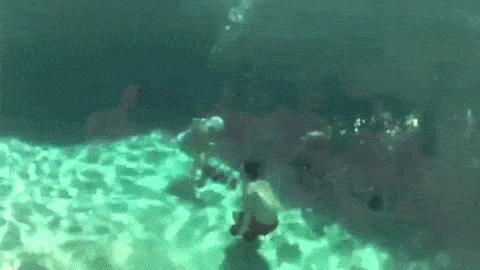
Reece does Hamilton's underwater pool workout
But even Hamilton admits to having off days. “Stuff happens,” he said. “You just take the bad ones with the good ones. After a while you get good at that -- balancing. You’ve been whacked enough times and you came back. It’s harder when you’re younger.”
Realizing that he can do the same thing each day but sometimes sustain an injury is just a part of life. “Sometimes it’s out of your hands. This too shall pass. But I always go through that spectrum of emotions of ‘will I be able to do it again?’ I have all that doubt and depression when I’m hurt,” he said.
His relationship to pain is a big part of his recovery. He sees pain as growth. “Your ability to handle pain on an injury level can be implemented into how you handle pain on an exercise level. Your tolerance for pain can help you work harder on the positive side,” he said.
“Part of the reason I’ve been able to do some of the endurance things I’ve done is because of my ability to be in discomfort."
Hamilton is loyal to ice baths and uses his tub outside multiple times a day, for a minimum of three minutes at a time, for training and recovery. He used to jump in the 40-degree ocean in Belgium or swim in the lakes in Alaska. He explains that icing is a common biohacking method.
When asked to explain biohacking, he offers what sounds like a parable. “If you want a tree to blossom, what do you do? Prune it,” he said. “By pruning it, you shock it. When you stress the system, it forces it to survive.”
It feels as though optimism is a chemical that runs through Hamilton’s veins -- or maybe he’s just survived enough injuries to have an unwavering faith in his body.
From his perspective, something good always comes out being injured. “It either slowed me down enough so I didn’t get really hurt, or I learned something new. That’s where my paddle boarding came in. When I broke my legs, I could barely walk. But I could still paddle.”
At 51, even though he says he may need hip replacement surgery and "doesn't fear it," Hamilton shows no signs of drying off. Pushing the boundaries is still a part of his life.
His latest endeavor is conquering the foil board. A hydrofoil attached below the surfboard allows the board to hover above the water. It -- as well as Hamilton's skills on the equipment -- will be the subject of a brand new documentary, which he expects to be released in two years.
Just like in 2000, there seems to be no wave too big for Hamilton. And now, with the technology of the foil board, he'll be able to achieve the necessary speed and power he needs to catch waves never ridden before.
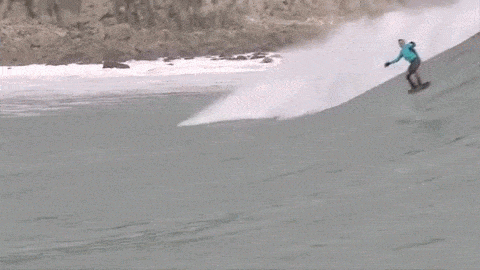
Hamilton foil boarding in New Zealand in 2015.
Hamilton has turned his paddle boarding into a business and recently launched Laird Superfood, which features his favorite coffee in the world. He also founded AquaThings, along with CEO Faramarz Farhoodi, and serves as the president of the surfing section, lending his expertise to help consumers buy the right surf gear. They are currently seeking investors for the project on Crowdfunder.
Also on HuffPost:

